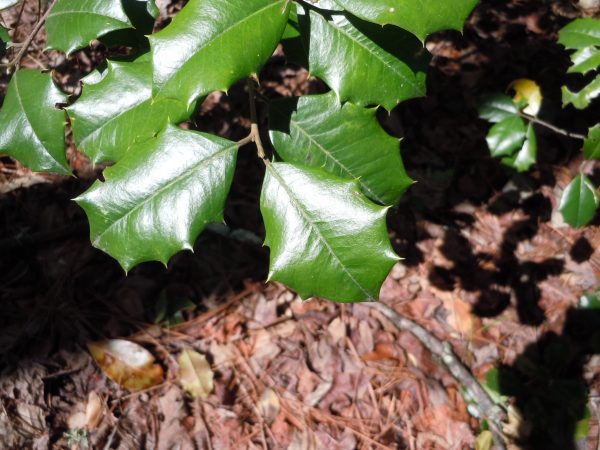Shrubs – No Flowers

I visited the proud parents of a new baby last week and was allowed to hold the young beauty in my arms. Just fed, she gradually slipped into sleep as the adults talked and marveled at her perfect fingers. I placed her gently in her crib to nap but something there was not quite to her liking. Waking with a jerk, she began to wail.
Mom picked her up and tried to sooth her. Dad took over and was equally hapless. Did she have gas? Were her diapers too tight? Had I scratched her with a fingernail? Three intelligent adults were perfectly incompetent at figuring out what was disturbing the child.
Gardeners feel the same way sometimes when confronted with a plant that simply does not bloom. Magnolias, dogwoods, wisteria and others are supposed to bloom….but sometimes they just won’t. Figuring out why a plant doesn’t bloom, or why one thrives and another doesn’t, is often a hopeless task. Sure, SOMETHING isn’t making the plant happy but we gardeners usually have a dickens of a time deciding what it is specifically.
LIGHT The first thing to consider is the light level around the plant. Light is food for a plant: if it doesn’t get enough light, it won’t have the energy to grow or to reproduce (bloom). Make sure you know the appropriate light conditions your plant needs before you put it in the ground. If your plant is already in place, does it now get the same amount of light it got years ago? More or less light could be the cause of its present problems. Consider moving the plant to a sunnier spot or pruning trees around it.
SOIL The second environmental condition to consider is the soil around your non-blooming plant’s roots. The vast majority of landscape plants prefer soil that is loose (not hard clay).
Water should be able to drain through the soil around the plant and away from it within a day after a rain. If the soil is hard, if it stays too wet or if it stays too dry, roots can’t prosper. Maybe you dug a hole originally that wasn’t quite big enough. Your plant has grown so much that the roots have “hit the sides” of the hole. If that is the case, consider loosening the soil in a large area around the present root system of your plant.
How far out should the soil be loosened? One estimate is that the distance (in feet) that roots extend from the trunk of a tree is equal to 2.5 multiplied times the thickness of the trunk in inches. For example, a dogwood tree trunk that is 4 inches in diameter (measured four feet from the ground) signifies that its critical roots extend 10 feet away (2.5 x 4 = 10). More of the secondary feeder roots extend out from there.
If your plant is a shrub, a rough estimate is that healthy roots extend .75 of its height and width added together. For example, a holly that is 6 feet tall and 6 feet wide needs a good root environment extending 9 feet from the trunk (.75 x 12 = 9).
Before blaming your plant’s poor performance on bad fertilizer or something else, make sure it gets the light and root resources it needs.
FERTILIZER It is true that blooms are influenced by plant nutrients… but fertilizer is less important than the light and soil conditions I described above.
If your soil is greatly deficient in phosphorus, its blooming and fruiting will be reduced. If the plant can’t get enough nitrogen, it will grow poorly and the leaves will be light green.
Try using a “high phosphorus” fertilizer such as 12-55-6 or similar. This may help or it may not. The effects of additional phosphorus will be slow – you might have to wait for a year to see any change.
GENETICS A final explanation for poor blooming is the plant’s genetics. If you transplant a dogwood or magnolia from the woods, you have no idea of its parentage. It could be the progeny of two poorly blooming plants and could inherit their propensity. In this case there is nothing you can do but enjoy the plant’s foliage!
The bottom line is that a healthy plant blooms when it is happy. Our bawling baby finally went to sleep as time took its toll. The passage of time may lead your plants to bloom properly as well.
If you provide the right light level, soil conditions and nutrients, you’ve done all you can. Part of the enjoyment of gardening and parenting is our faith that giving a plant (or child) a nurturing environment will eventually lead to happiness.













